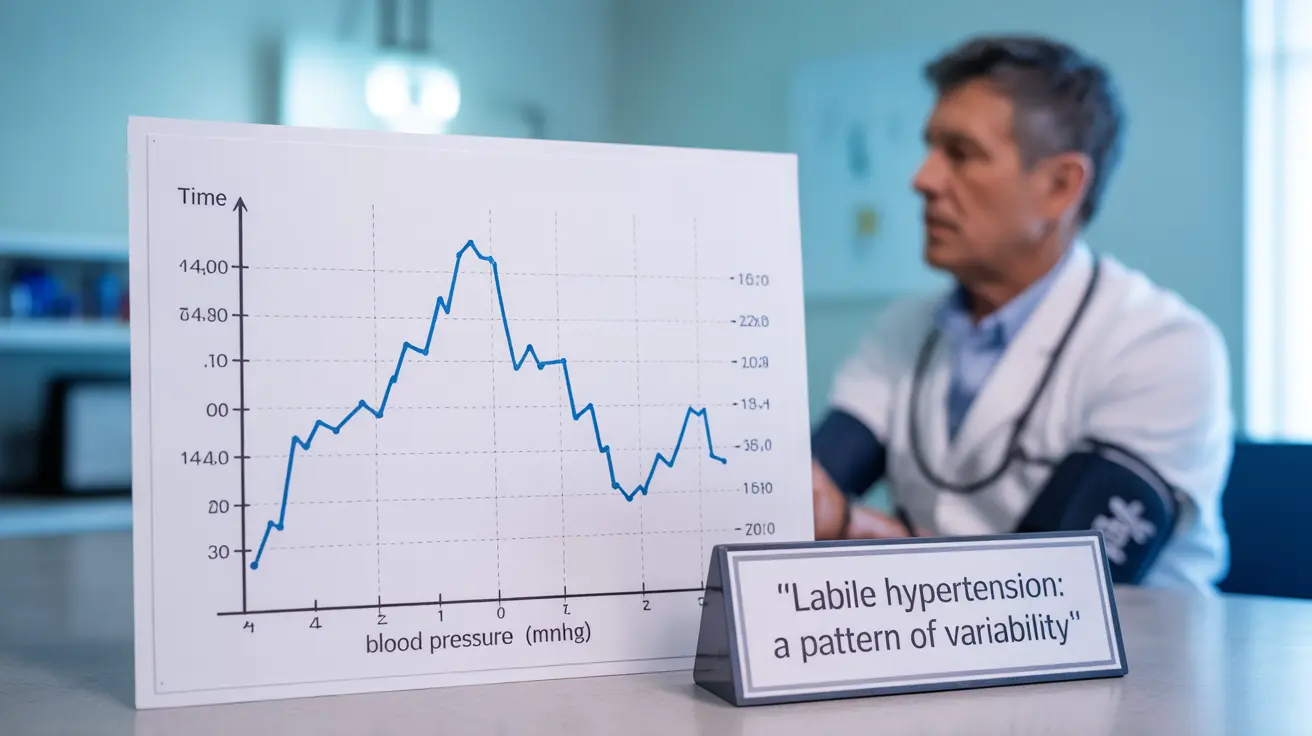Labile hypertension, characterized by frequent and significant fluctuations in blood pressure readings, can be a concerning condition that affects many individuals with blood pressure issues. These unpredictable variations can occur within minutes or hours, making it distinct from the typical daily blood pressure changes most people experience.
Understanding this condition is crucial for proper management and treatment, as these sudden blood pressure spikes can potentially lead to serious health complications if left unaddressed. Let's explore the key aspects of labile hypertension, including its causes, symptoms, and effective management strategies.
What Causes Labile Hypertension?
Several factors can trigger episodes of labile hypertension, ranging from emotional states to environmental conditions:
- Stress and anxiety
- White coat syndrome (anxiety in medical settings)
- Medications and substances
- Physical activity
- Pain
- Full bladder
- Certain medical conditions
Understanding these triggers is essential for developing effective management strategies and preventing sudden blood pressure fluctuations.
Recognizing the Signs and Symptoms
While blood pressure fluctuations themselves may not always produce noticeable symptoms, some individuals might experience:
- Headaches
- Dizziness
- Heart palpitations
- Flushing
- Sweating
- Anxiety or nervousness
- Chest discomfort
These symptoms can vary in intensity and may not occur during every episode of blood pressure elevation.
Diagnosis and Monitoring
Proper diagnosis of labile hypertension requires careful monitoring and documentation of blood pressure readings over time. Healthcare providers typically recommend:
Home Blood Pressure Monitoring
Regular home monitoring using an approved blood pressure device helps track patterns and identify triggers. Keep a detailed log of:
- Time of day
- Blood pressure readings
- Activities before measurement
- Emotional state
- Recent meals or medications
Professional Assessment
Healthcare providers may use various diagnostic tools including:
- 24-hour ambulatory blood pressure monitoring
- Detailed medical history review
- Physical examination
- Laboratory tests to rule out underlying conditions
Treatment Approaches
Managing labile hypertension often requires a comprehensive approach combining several strategies:
Lifestyle Modifications
- Stress management techniques
- Regular exercise
- Balanced diet with reduced sodium
- Adequate sleep
- Limiting caffeine and alcohol
Medical Management
Treatment may include:
- Blood pressure medications
- Anti-anxiety medications when appropriate
- Treatment of underlying conditions
- Regular medical monitoring
Frequently Asked Questions
What are the common causes and triggers of labile hypertension?
Common triggers include emotional stress, anxiety, white coat syndrome, certain medications, physical activity, and underlying medical conditions. Environmental factors and dietary choices can also play a significant role in triggering episodes.
What symptoms indicate I might be experiencing labile hypertension episodes?
Key symptoms may include headaches, dizziness, heart palpitations, flushing, sweating, and chest discomfort. However, some people might experience no symptoms despite having significant blood pressure fluctuations.
How is labile hypertension diagnosed and how can blood pressure fluctuations be monitored?
Diagnosis involves regular blood pressure monitoring both at home and in clinical settings, often including 24-hour ambulatory monitoring. Healthcare providers will review medical history and may conduct additional tests to rule out other conditions.
What lifestyle changes and treatments can help manage labile hypertension?
Management typically combines lifestyle modifications (stress reduction, regular exercise, healthy diet) with appropriate medical treatments. This may include blood pressure medications and treating underlying conditions that contribute to blood pressure fluctuations.
What is the difference between labile hypertension and paroxysmal hypertension?
While both conditions involve blood pressure fluctuations, labile hypertension is typically triggered by identifiable factors and occurs more frequently. Paroxysmal hypertension involves sudden, severe blood pressure spikes that often occur without clear triggers and may be more difficult to predict.




